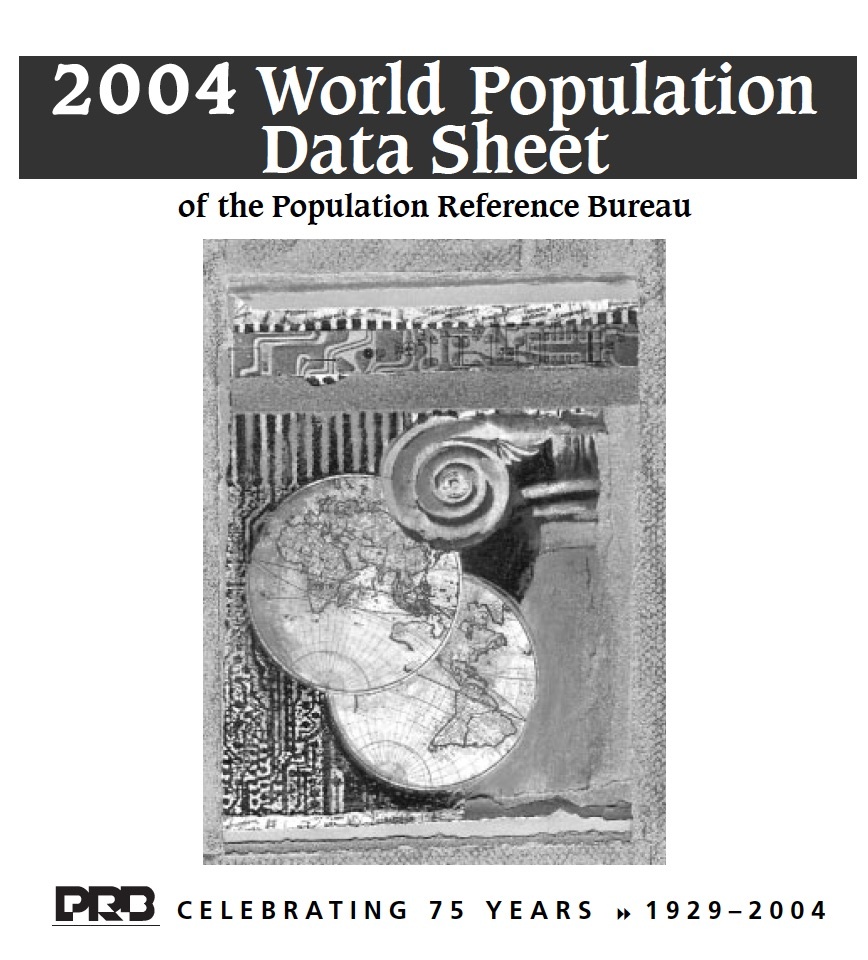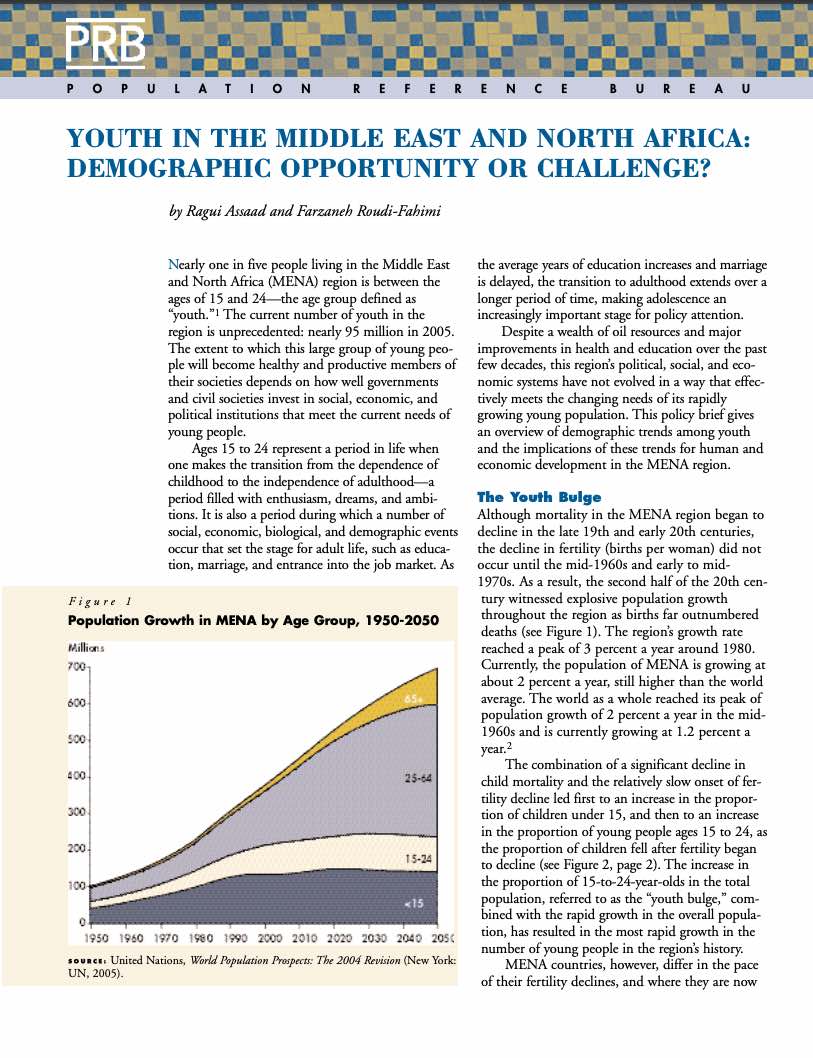504 Search Results Found For : "demographic dividend"

2004 World Population Data Sheet
(2004) The starkly uneven pace of population growth between most developing and industrialized nations represents the world's major demographic fault line. The Population Reference Bureau's just-released 2004 World Population Data Sheet demonstrates that nearly 99 percent of all population increase takes place in poor countries, while population size is static or declining in the rich nations.

Youth in the Middle East and North Africa: Demographic Opportunity or Challenge?

People @ PRB: Introducing Apoorva Jadhav, Our New Senior Fellow
As our new Senior Fellow, Dr. Jadhav will help PRB explore the global shift to lower fertility—and the implications for health, well-being, and rights.

Report. Youth in the Middle East and North Africa: Demographic Opportunity or Challenge?

Project: Center for Public Information on Population Research (CPIPR)
Off the Clock: Europeans Can Expect to Spend Over Half of Their Lives After Age 15 Providing Unpaid Care Work
Women spend more time as caregivers than men, and childless adults provide more support to their parents than those with children, studies on Europe show
In the News: The Nigerian Census
(2006) Census taking seems a quiet affair to most people in the United States, where the head count runs relatively smoothly and is reliably decennial.

Project: Center for Public Information on Population Research (CPIPR)
Webinar: Where Is the Workforce? Understanding the U.S. Labor Shortage and Working Toward Solutions
PRB, the Critical Labor Coalition, and special guest former U.S. Secretary of Labor R. Alexander Acosta discuss the latest data behind the shrinking U.S. workforce and explore potential policy solutions.
